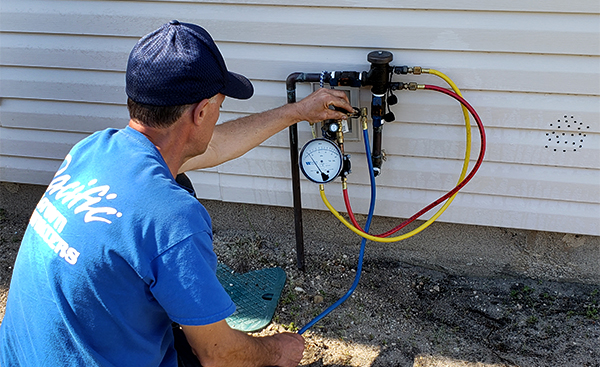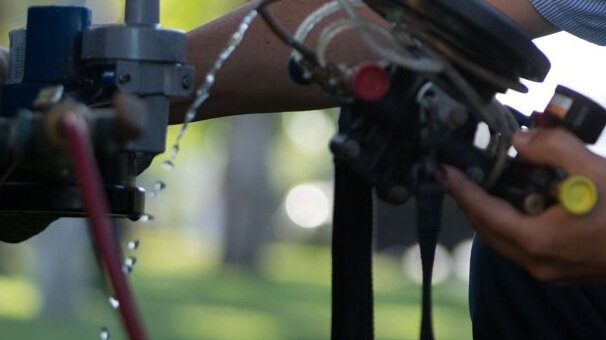Is Backflow Testing Essential for My Water?
Is Backflow Testing Essential for My Water?
Blog Article
The author is making several great points about Is backflow testing necessary? as a whole in this great article directly below.

Yes, you need to backflow test your house's water system to make certain that the water is without toxins and dangerous levels of chemicals. You should not try to do heartburn testing on your own due to the fact that of the equipment called for and also area for mistake. We recommend that you call a specialist plumber every couple of years to test your water.
Backflow Can Effect Both You as well as Your City
Many cities establish heartburn guidelines since unsafe backflow can influence the public water supply along with a single structure. Thankfully, modern cities have backflow devices in place that secure the supply of water that comes from a lot of residences as well as industrial residential or commercial properties. The actual risk comes from irrigation systems, which can harm the water system with poisonous plant foods, manure, as well as other chemicals.
What Triggers Heartburn?
A common cause of backflow is a loss of water stress that creates the water to siphon back right into the water supply. After some time, there is a loss in water stress and also the hose pipe begins to draw the water back right into the water supply. As you can visualize, there are currently chemicals from the paint that are entering the water supply, possibly posturing a risk.
Backflow Testing is Called For by Regulation in Particular Cities
Depending on where you live, you could in fact be called for by law to backflow examination your regulation. Iowa City maintains a document of all properties served by the city's water supply.
You Can Avoid Heartburn
If you have an expert plumber mount a backflow gadget, unsafe backflow is conveniently avoidable. The plumber will certainly likewise examine for heartburn and also figure out if there is an active hazard. The primary function of a backflow gadget is to avoid water from streaming in reverse right into your water supply. Plumbing professionals mount the device on the pipelines in your house to guarantee that the water only moves in the proper direction.
What is Heartburn?
In other words, backflow is when water moves upwards-- the contrary direction in the plumbing system. This is likewise referred to as "backpressure." When the water relocates this direction, it can combine with dangerous toxic substances and present a danger.
Call a Plumber to Evaluate for Heartburn Before It is Far too late
A plumbing business can promptly evaluate your home's water to figure out if there are any kind of unsafe chemical levels. And also if you do discover that your water has high levels of contaminants, a plumber can easily set up a backflow prevention device.
Yes, you need to backflow examination your residence's water supply to guarantee that the water is complimentary of toxic substances and also unsafe levels of chemicals. Many cities develop heartburn standards due to the fact that dangerous backflow can affect the public water supply in enhancement to a solitary structure. A typical reason of heartburn is a loss of water stress that triggers the water to siphon back into the water supply. After some time, there is a loss in water stress and also the hose starts to draw the water back into the water supply. The primary purpose of a backflow gadget is to stop water from streaming in reverse into your water supply.
Backflow Testing: What Is It, and Why Is It Necessary?
What Is Backflow?
Backflow is exactly what you might imagine this somewhat gross-sounding word to mean. It is contaminated water that has reversed flow, and as a result, enters into the clean water lines of homes and businesses. Backflow is typically caused by a significant change in water pressure. This can be due to a water main break, frozen pipes or an unexpectedly high demand on the water system. It can occur at any cross-connection between clean and dirty water in residential, commercial or industrial water lines. And the worst part – backflow can contain hazardous materials like human waste, pesticides or chemicals. Needless to say, it poses very, very serious health concerns, not to mention the potential for a heap-load of expensive stress!
Backflow Prevention and Testing
In order to safeguard against backflow in standing structures, a backflow prevention device should be installed by a trusted team of professionals. Once installed, if there should ever be an unexpected or dramatic change in water pressure, the device will prevent backflow from entering into the clean water supply system. But, again, it’s important that this device is properly installed by a professional so that they can test it and ensure that the clean water line remains contaminant free. This really is key.
While personal standards and responsibilities should maintain certain routine testing requirements, there are already municipal codes in place that require annual testing of these backflow prevention devices. This ensures that they are functioning properly and that no hazardous contaminants are spilling out into the clean water supply. If, however, testing of any device is not completed on time, you should know that a property or business’ water supply might be interrupted, and the property owner might even face fines. So, to avoid this from happening to you, we recommend scheduling a backflow test well in advance.
Fortunately, here at Tritan, we can help schedule and carry out backflow testing for your property. We provide a variety of backflow-related services, including prevention device installation and testing. Call us today and make sure that this stressful problem doesn’t happen to you and your property or business.
https://www.tritan-plumbing.com/blog/2018/february/backflow-testing-what-is-it-and-why-is-it-necess/

As an avid person who reads on Commercial Backflow Testing, I was thinking sharing that editorial was a good thing. So long as you enjoyed reading our post kindly don't forget to share it. We recognize the value of reading our article about Backflow Testing.
Additional Resources
Report this page